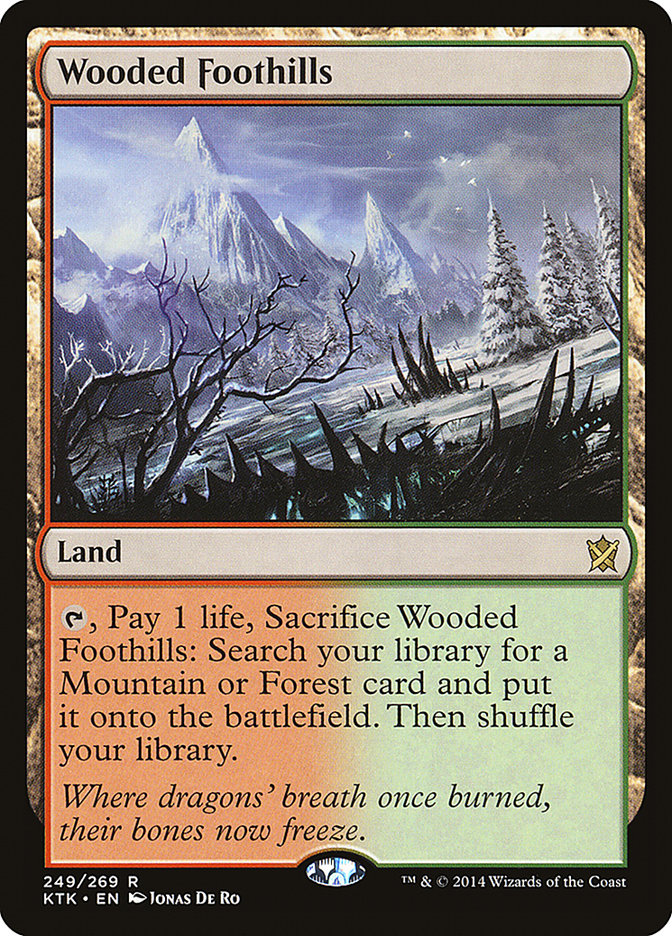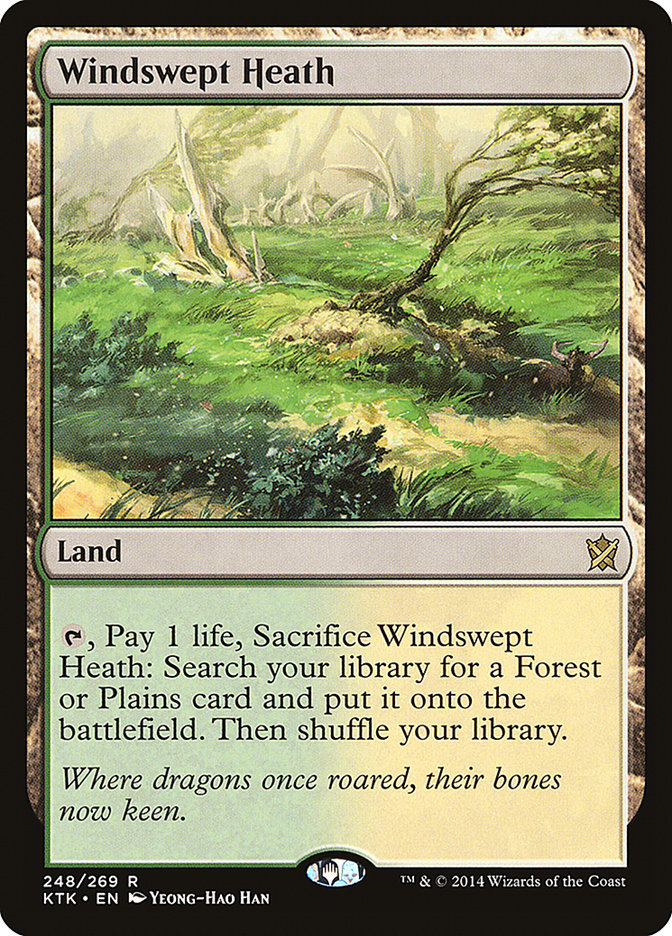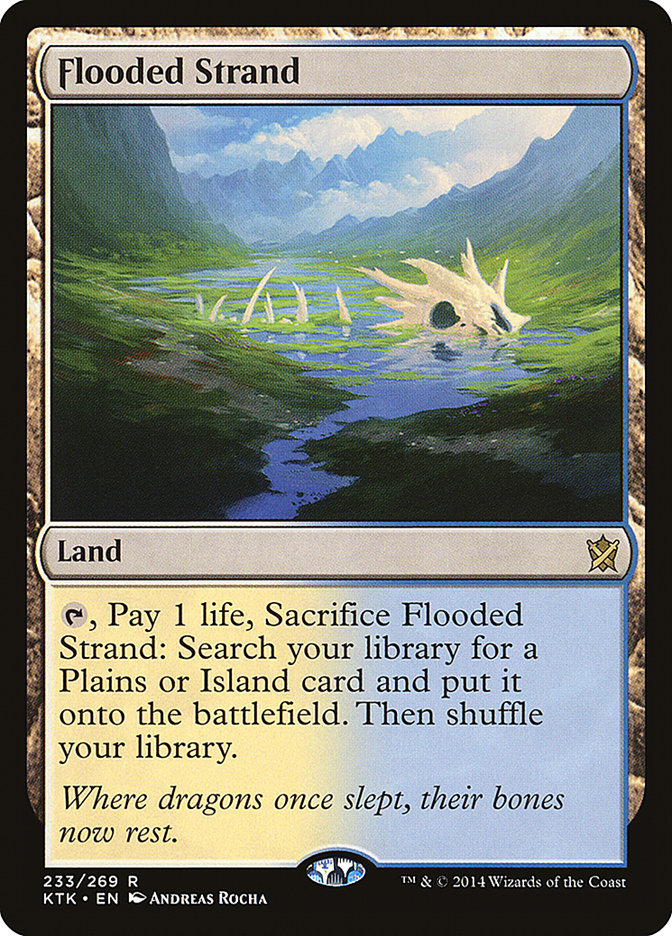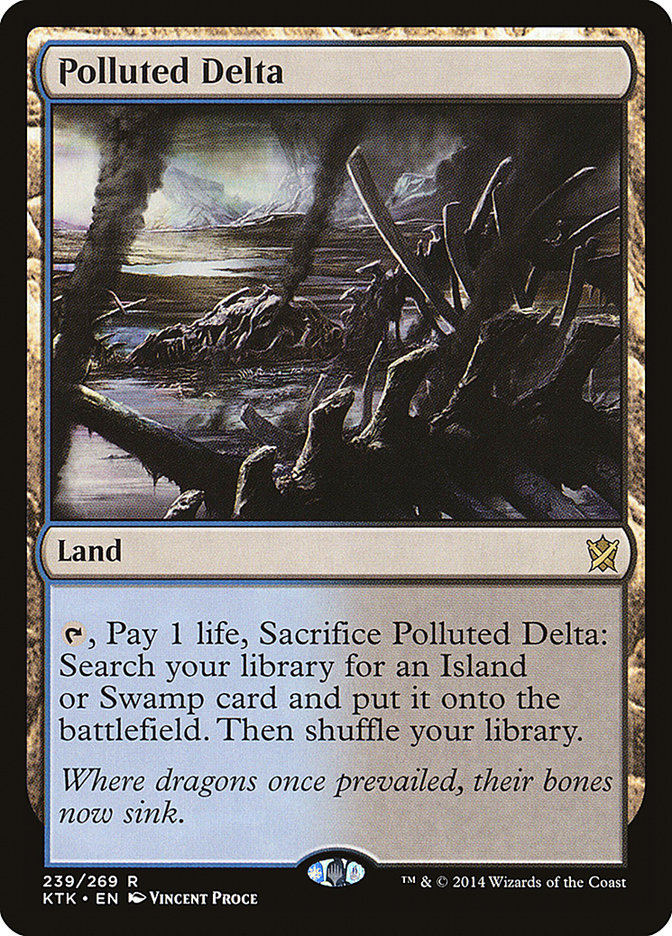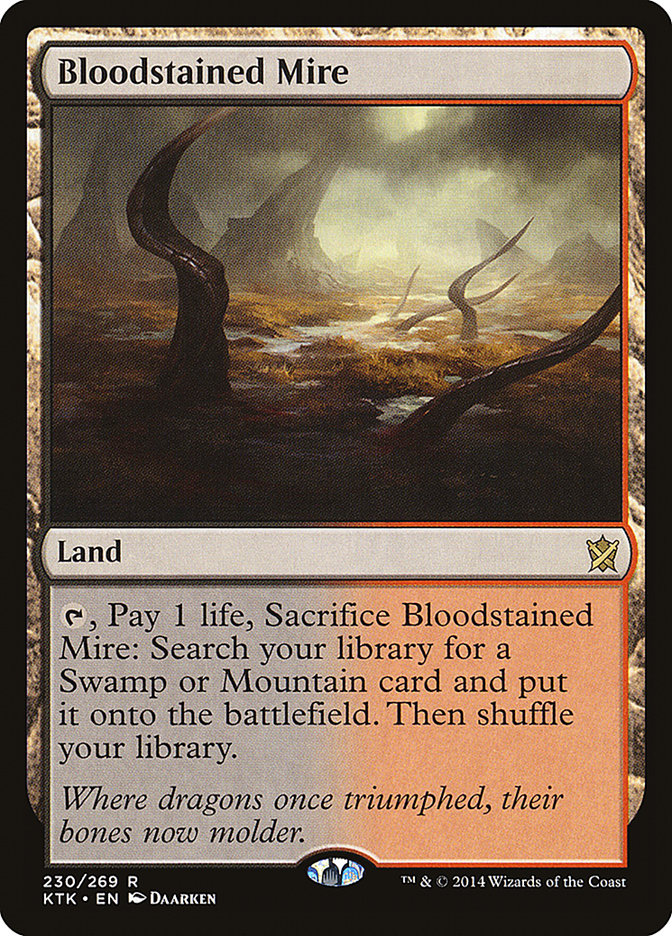This is a big deal.
A really big deal.
Let’s get straight to the point: this is the most important thing to ever happen to Modern. More important than Modern Masters being printed. More
important than any banning or unbanning and more important than Grand Prix Richmond, which in my view, was the best thing to happen to Modern before these cards became legal:
One of the underlying weak points of the format was how shard-colored decks had to play awkward fetchlands, which in turn, led to one of two things: the
overall increase in loss of life, and/or a concession via playing fast lands or M10 duals. Now, that all changes. While it may not sound believable now,
you will see a sharp increase in shard-colored decks from now on.
I’m sure you’re asking yourself how this is true when we didn’t get any actual real cards in Khans of Tarkir (as of this writing, at least). The first
issue with that question is the implication that fetchlands aren’t real cards. You’ll be in for a very rude awakening if that’s what you think.
Have you ever wondered why Jeskai control decks work? Is it because of the powerful interaction of Lightning Bolt and Snapcaster Mage? What about the super
strong late game of Celestial Colonnade and Sphinx’s Revelation?
While both of those things are true, the manabase is the actual reason.
Jeskai takes very little damage from its lands, resulting in much more longevity while still being able to operate on all cylinders at all stages of the
game. The presence of both Scalding Tarn and Arid Mesa provide a very large cushion when preserving your life total (which many players don’t do enough
with these decks in general) and don’t punish you for having basic lands of each type in your deck. This also lets you more easily play around cards like
Tectonic Edge and Blood Moon.
“But Lowry! There aren’t any real aggro decks punishing you for shocking your lands down or playing any fetch in your color!”
Yeah, okay.
How many times have you lost to a 4/5 Tarmogoyf at four life when you could’ve done something other than fetch for a shock? How many times have you gotten
tempoed out by a pair of Pestermites and a Deceiver Exarch? How many times have you lost the game because you couldn’t fetch the color you wanted to get
because of that Misty Rainforest in your Jund deck or because Blood Moon completely crushed you when you least expected it? Lastly, how do you even know
there won’t be better aggro decks out there because of this? You’re probably losing more games than you think because of your lands!
This isn’t Legacy, people! You will be crushed if you don’t prepare for anything and everything, and you won’t have cards like Brainstorm or Force of Will
to bail you out!
To give more of a visual example, let’s take the strong points of Jeskai Control, and apply it to an Esper shell:
Creatures (5)
Planeswalkers (4)
Lands (26)
Spells (25)

Creatures (6)
Planeswalkers (4)
Lands (25)
Spells (25)
- 1 Wrath of God
- 4 Gifts Ungiven
- 1 Last Breath
- 1 Engineered Explosives
- 1 Shadow of Doubt
- 1 Think Twice
- 1 Slaughter Pact
- 3 Thoughtseize
- 3 Path to Exile
- 1 Inquisition of Kozilek
- 1 Go for the Throat
- 1 Batterskull
- 1 Dismember
- 1 Timely Reinforcements
- 1 Unburial Rites
- 1 Lingering Souls
- 1 Supreme Verdict
- 1 Sphinx's Revelation

With Polluted Delta and Flooded Strand, there’s much less strain on our life total, and we can get any colors we want at almost any time, including basics.
In the Gifts shell, we no longer need to splash a fourth color, which inherently makes our mana much better. I know I talked about Life from the Loam in
these decks and how powerful that option was last week, but things change. Now, we can actually have a respectable manabase that doesn’t get completely
destroyed by Blood Moon and isn’t nearly as much of a dog to decks like Burn and Affinity. Yes, we don’t get to grind ever single bit of value out of our
deck, but do we care? We’re so much cleaner now, so just kill them!
Of course, decks like Jund are much cleaner as well:
Creatures (16)
Planeswalkers (5)
Lands (24)
Spells (15)

Blackcleave Cliffs, while still worth including in Jund builds, now requires some thought. Do you want to maximize your land options via fetches, or just
go with the less painful but more unreliable mid-game option? The same questions can be asked for all of the Scars of Mirrodin lands, but Jund gets a bit
more treatment because of cards like Courser of Kruphix. Is Courser of Kruphix a more solid option now that you take less damage over the course of a
tournament, or are the more robust four mana options making things tough on the enchantment creature?
Of course, shards aren’t the only ones getting a big improvement from the inclusion of these fetchlands. Melira Pod decks can now get basic Plains and
basic Forest more easily with Windswept Heath. RUG Twin has the option of adjusting some of their fetches to Wooded Foothills in order to get basic Forest
or Mountain more easily, if they so choose. Jeskai getting Flooded Strand is a huge boon that lessens the effect of Tectonic Edge and Blood Moon, so we’ll
surely see some number of those replacing or complementing Arid Mesa.
That isn’t all. Even decks that play two colors get big benefits. Part of the reason Zoo decks haven’t been popping up as much is because they take a huge
amount of damage from their manabase, to the point where they’re often struggling to justify the damage they’re taking relative to the damage they’re
dealing. However, with allied fetches, we can play Wild Nacatl decks without forcing a bad manabase:
Creatures (36)
- 4 Tarmogoyf
- 4 Wild Nacatl
- 4 Hellspark Elemental
- 4 Goblin Guide
- 4 Stormblood Berserker
- 4 Flinthoof Boar
- 4 Burning-Tree Emissary
- 4 Experiment One
- 4 Ghor-Clan Rampager
Lands (18)
Spells (6)
Sideboard

The “old school” R/G Zoo deck but with Wild Nacatl! The great part about this deck is how you can take three from a fetching and shocking, but there’s a
strong chance that you won’t have to do it again after that, leaving you at a healthy life total. Even if you do have to, you certainly aren’t doing it
more than that, and you aren’t forced to get lands to make cards like Tribal Flames work since Ghor-Clan Rampager is essentially a Tribal Flames anyway.
You retain your explosiveness, keep your life total relatively high, and have a whole lot of sustainability as well, all because your deck doesn’t require
you to lose an average of two life per turn! It doesn’t look obvious, but that’s the great part about it: it isn’t going to be obvious for a while, and
when players begin to pick up on how big of a difference these fetches make, that’s when we’ll see Modern change big time.
It isn’t all great news for a bunch of decks, cards, and strategies, however. A lot of cards will potentially become less effective. One of those cards I’m
weary of is Blood Moon. Blood Moon capitalized on the off-color fetchland problem, and now that we’ll see many more basic lands and lands that line up
properly, Blood Moon winds up being more high variance if you aren’t accelerating it out, which is hard to do in this format. On the other side, Shadow of
Doubt, a card that I believe is criminally underplayed, can certainly see an uptick in the short term. Players already utilize fetchlands and other search
effects in an unwieldy manner, so punishing them for getting reckless with their new shiny lands is certainly something worth looking at, especially in
control decks like Blue Moon and other grindy, Bolt-based blue control decks. We also can’t count out Burn, which thrives off of the fact that fetchlands
exist and can utilize fetchlands themselves.
Creatures (12)
Lands (20)
Spells (28)
- 4 Flames of the Blood Hand
- 4 Lightning Bolt
- 4 Lava Spike
- 4 Rift Bolt
- 4 Searing Blaze
- 4 Bump in the Night
- 4 Skullcrack
Sideboard

Just how far will allied fetchlands take us in Modern? I think the implications are much deeper than what we realize, but that’s all the more exciting for
the format. Will G/W Hatebears take a step up because of a better manabase? Is Faeries a more legit contender now? What about Grixis Twin or U/W Delver?
All of these ideas are now worth considering, and I can’t wait to see how things change.


